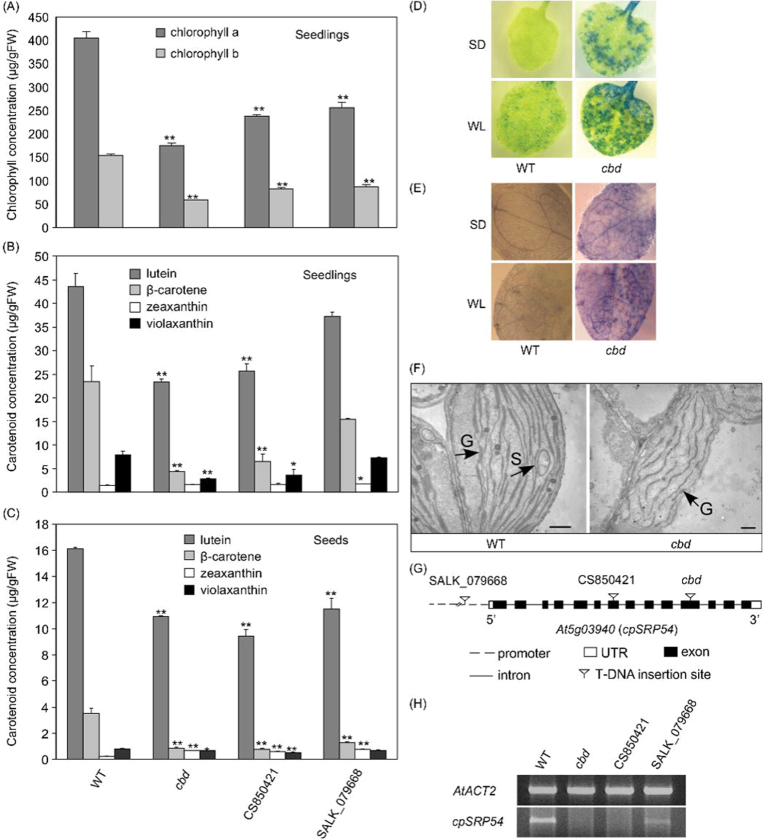Fig. 2.
Characterization of chloroplasts and cpSRP54 transcript abundance in cpSRP54-deficient mutant lines and WT Arabidopsis. (A) Chlorophyll content of 7-day-old seedlings of mutant lines and WT. (B) Carotenoid content of 7-day-old seedlings of mutant lines and WT. (C) Carotenoid content of mature seeds of mutant lines and WT. Values are mean ± standard error of three extractions from independent seedling plates or seed batches. Significant difference was set at P ≤ 0.05 (*) and P ≤ 0.01 (**) relative to WT Arabidopsis. (D, E) Representative staining of leaves of WT and cbd plants grown under standard light (SD, 16/8 light/dark) and continuous white light (WL): (D) Evan’s Blue, where dead cells show as blue-green patches; (E) nitroblue tetrazolium, where the presence of superoxide results in a purple-blue precipitate. (F) Representative TEM of chloroplasts of WT and cbd. G, grana; S, starch granule. Bar, 500nm. (G) Schematic diagram of T-DNA insertion sites in cpSRP54 mutant lines cbd, CS850421, and SALK_079668. (H) Semi-quantitative RT-PCR analysis of cpSRP54 in mutant lines and WT.

